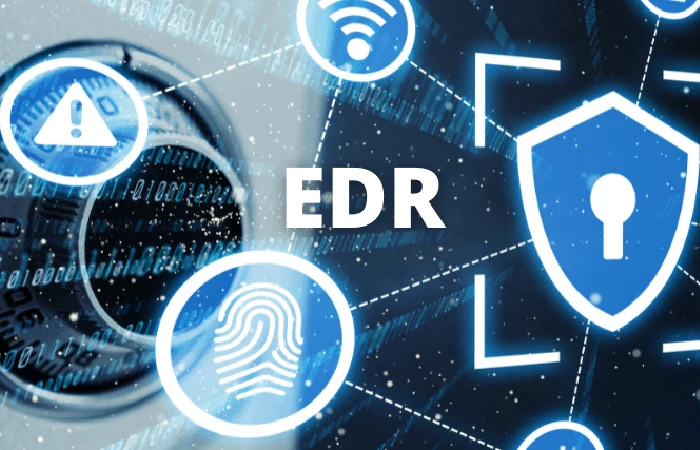EDR – In the world of technology and security, various terms and acronyms are expected to come across that can confuse those unfamiliar.
One such term is ‘ EDR, ‘ used in different contexts, such as computer security, finance, Bluetooth, and files. But what does ‘EDR’ mean, and how is it applied in each area?
Shortly, TSR will explore what ‘EDR’ is in these contexts and how it affects our daily lives.
Meaning of EDR in security

EDR, for its acronym in English, stands for ‘ Endpoint Detection and Response. In computer security, it refers to a technological solution designed to protect and respond to possible threats and attacks on a network’s end devices or endpoints, such as computers, servers, and mobile devices.
The primary function of it system is to continually monitor endpoints for strange behavior or suspicious activity that may indicate the presence of malware, intrusions, or unauthorized access attempts.
What is EDR in cybersecurity?
In cybersecurity, endpoints refer to devices connected to a network, such as computers, servers, mobile devices, and other smart devices. These endpoints are vulnerable points that can be attacked by malware, hackers, or malicious activities.
It technology enables proactive threat detection and rapid response to endpoint security incidents. Through continuous monitoring and analysis of real-time data such as event logs, system activity, and file behavior, the EDR system identifies anomalous patterns and behavior that may indicate the presence of a threat.
What is EDR in computing?
EDR technology focuses on continuously monitoring endpoints to detect anomalous behavior or suspicious activities that may indicate the presence of malware, intrusions, or unauthorized access attempts. This is achieved by collecting and analyzing real-time data such as event logs, file activity, and system behavior.
Implementing it solution in the IT field is essential to strengthen the security of systems and prevent security incidents. With detection and response capabilities at endpoints, response time to threats is reduced, and recovery of affected systems is accelerated.
What is EDR in antivirus?
The technology in antivirus focuses on proactive detection and rapid response to threats on end devices. Unlike traditional signature-based detection approaches, it uses more advanced techniques like behavioral analysis and artificial intelligence to identify malicious or suspicious activity in real-time.
The primary function of antivirus is to constantly monitor endpoints, such as computers and mobile devices, for strange behavior or patterns of suspicious activity.
What is EDR in Bluetooth?
Before the introduction of EDR, the data transfer speed in Bluetooth was relatively slow. However, with the implementation of it, a significant improvement in transfer speed is achieved. Making it easier to send and receive larger files and use applications that require faster data transmission.
Moreover, the standard in Bluetooth offers theoretical transmission speeds of up to 3 Mbps (megabits per second). It can achieve practical transfer rates of around 2.1 Mbps.
What are EDR and HS in Bluetooth?
It is an improvement in the speed and efficiency of data transmission through Bluetooth technology. It enables greater data transmission capacity, resulting in faster, more efficient transfer of files and other information between compatible devices. HS (High-Speed): HS, conversely, means ‘High-Speed.’
What is Sophos EDR?
Sophos EDR is a tool used to detect and respond to potential threats and attacks on end devices on a network. This solution offers real-time monitoring capabilities, abnormal behavior detection, and automatic response to endpoint security incidents.
What is an EDR in risk management?
In the context of risk management, it refers to ‘Risk and Damage Assessment’ or ‘ Risk and Damage Study ‘. These acronyms describe a methodology or process used to identify, evaluate, and manage the risks and damages associated with a specific context or project.
What is an EDR in finance?
An EDR ( Event Defined Risk ) in finance refers to an event that can generate financial losses, affect the financial system’s stability, or compromise the integrity of financial operations.
Moreover, these events may include an economic crisis, a stock market crash, a financial institution bankruptcy, a credit rating downgrade, or a natural disaster that impacts financial infrastructure.
Is EDR and RBS the same?
No, EDR and RBS are not the same. Below, we explain the differences:
EDR refers to Endpoint Detection and Response. It is a security solution used to detect and respond to cyber threats on end devices on a network. It focuses on monitoring endpoint behavior and taking response measures to mitigate risks and protect the network from attacks.
Lastly, RBS translates to risk-based supervision. This is an approach used in the supervision and regulation of financial institutions. RBS involves assessing and managing the risks inherent in the activities of a financial institution.





